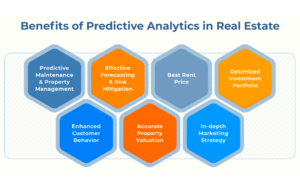Ascendix explains how Predictive Analytics in real estate powers top Brokers
This month Darina Milova from Ascendix gives clear insight on how technology can optimize real estate workflows.
‘Real estate revolves around data, leveraging it is paramount, successful real estate practitioners understand this. They do not rely on guesswork to identify potential clients who are more likely to convert, invest, or rent when predictive analytics can do the job.
Harnessing predictive analytics in real estate, you can predict property maintenance needs, calculate property values accurately and identify lucrative opportunities for investment. It enhances decision-making, optimising marketing strategies, and revolutionizes property asset management.
What is Predictive Analytics in Real Estate?
Real estate predictive analytics is a branch of advanced analytics that utilizes historical data to build probabilities and strategies about future outcomes. Utilising statistical algorithms, machine learning (ML), and source data, the next-level technology assesses when and where to invest, optimises selections, and determines the real value of properties; risks are mitigated, and opportunities capitalized.
Powered by Artificial Intelligence (AI), Predictive Analytics (PA) stands as the third stage in the analytics process hierarchy, while answering the following ‘What will happen?’ So, when the data is analysed, based on the insights you can view the forecasts on: Sales, Market trends, Customer and tenant behaviour, Risk assessment & Investment returns.
An example of would be imagine you are a real estate investor considering buying a rental property. You have essential historical data on comparable properties in the area, including their rental prices, location, size, and amenities.
Using analytics, you identify that properties in certain neighbourhoods with specific amenities tend to command higher rental prices or that properties in a particular area will experience an increase in rental demand due to factors like job growth or new amenities being built nearby. Optimising your investment strategy and maximize rental income.

How Does Predictive Analytics Work?
Predictive analytics in real estate is based on four main pillars. Note that the models may vary, but the following steps are vital:
Goal setting: Before commencing with your data analytics project, it is important to identify the problem that must be solved and set a feasible goal. This is the foundation for the next stages.
Data collection: This involves collecting data from databases, sensors, and other sources. The machine learning (ML) approach helps with this step. When all information is retrieved, it’s time to preprocess raw data. This involves cleaning, error correction, duplicates removal, and format standardization.
Model creation: A model represents a real system that uses data for forecasts. Models come in the following forms: decision trees, regression, neural networks, cluster models, and time series modeling. The final choice depends on the problem and existing data.
Deployment: The closing step is to validate and deploy the results to access accurate data predictions.
To conclude, real estate predictive analytics changes the industry by offering invaluable insights across various key areas. If you want to find out more please ‘Book a free Proptech Development strategy call with Ascendix ‘ by clicking on the image below.
Written by Darina Milova: An an expert in property and AI technology.
To read the full article and learn more about Ascendix please use this LINK.
Andrew Stanton’s PROPTECH-X ‘Proptech & Property News’ in association with Estate Agent Networking & News Now publications. #proptech #property #realestate #digitaltransformation #startups








